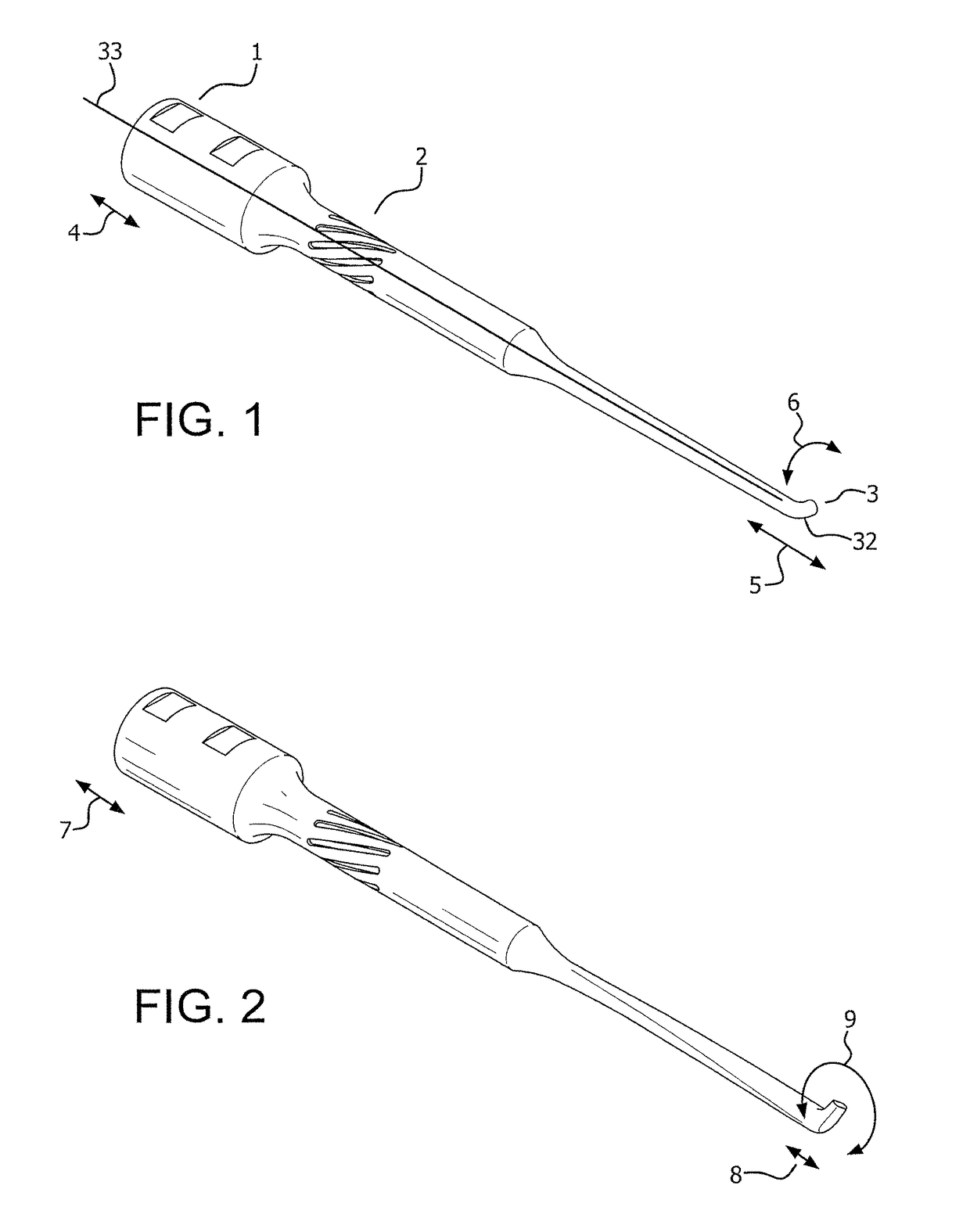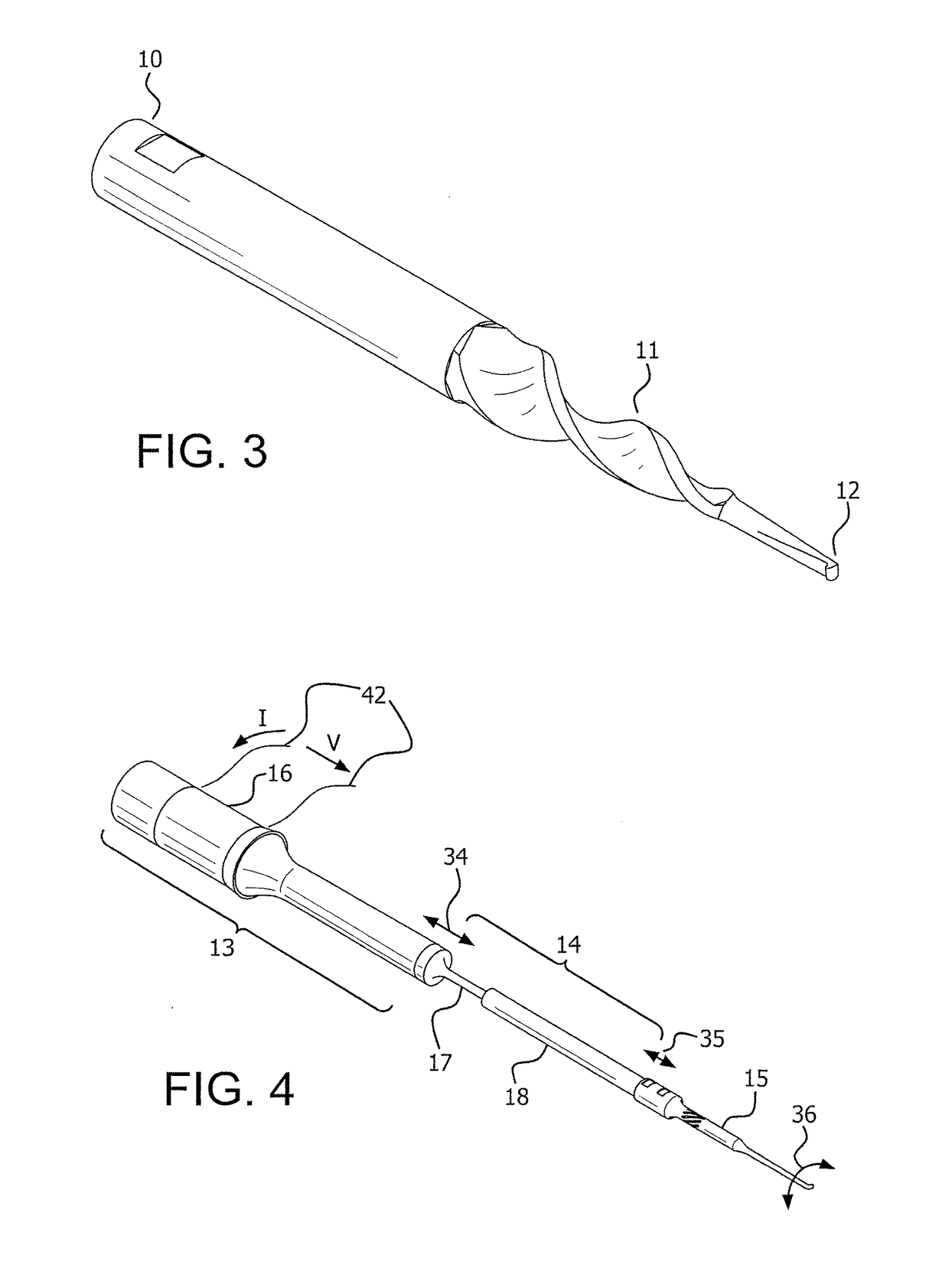Ultrasonic torsional tissue dissection utilizing subaltern modes of longitudinal-torsional resonantors
a technology of longitudinal torsional resonance and ultrasonic torsional tissue, which is applied in mechanical vibration separation, medical science, surgery, etc., can solve the problem that current will not provide enough power to the tl/t tip to perform useful work
- Summary
- Abstract
- Description
- Claims
- Application Information
AI Technical Summary
Benefits of technology
Problems solved by technology
Method used
Image
Examples
Embodiment Construction
[0015]FIG. 1 depicts an L / T tip of conventional design operating at resonance in its design L / T mode. A tip comprises a resonator and its tissue dissecting terminus. Spiral grooves 2 in the surface of part of the tip generate longitudinal-torsional motion in the structure when the tip is excited by an extensional motion 4 at its receiving face 1. It consequently generates two motions, an extensional motion 5 and a rotational motion 6 at its tissue dissecting terminus 3. In general the magnitude of the two motions 5 and 6 are comparable so that the movement of a point on the terminus appears to execute a motion at an angle to the tip's longitudinal axis 33. This angle, determined by the relative magnitudes of the motion and by the tip's design can vary from as little as ten to as much as seventy degrees or more. In practice it is generally desirable that the angle be in the range of 30 to 60 degrees for efficacious dissection of cortical bone. An important consideration is the ratio ...
PUM
 Login to View More
Login to View More Abstract
Description
Claims
Application Information
 Login to View More
Login to View More - R&D
- Intellectual Property
- Life Sciences
- Materials
- Tech Scout
- Unparalleled Data Quality
- Higher Quality Content
- 60% Fewer Hallucinations
Browse by: Latest US Patents, China's latest patents, Technical Efficacy Thesaurus, Application Domain, Technology Topic, Popular Technical Reports.
© 2025 PatSnap. All rights reserved.Legal|Privacy policy|Modern Slavery Act Transparency Statement|Sitemap|About US| Contact US: help@patsnap.com



